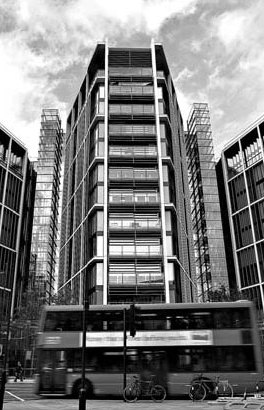Even the owners just visit exclusive London area
Updated: 2013-04-14 08:07
By Sarah Lyall(The New York Times)
|
|||||||
|
The occupants of the One Hyde Park building are rarely seen. Warrick Page for The New York Times |
LONDON - As dusk falls across Belgravia, home to some of the world's most valuable real estate, almost no one seems to be coming home. Perhaps half the windows are dark.
It seems that practically the only people who can afford to live there don't actually want to. Last year, the real estate firm Savills found that at least 37 percent of people buying property in the most expensive neighborhoods of central London did not intend them to be primary residences.
"Belgravia is becoming a village with fewer and fewer people in it," said Alistair Boscawen, a local real estate agent. He works in "the nuts area" of London, as he put it, "where the house prices are bonkers" - anywhere from $7.5 million to $75 million.
The buyers, increasingly, are superwealthy foreigners from places like Russia, Kazakhstan, Southeast Asia and India. For them, London is just a stop in a peripatetic existence that might also include New York, Moscow and Monaco.
Along Elizabeth Street, foot traffic the other day was very slow. A Belgravia resident from Colombia, who was shopping at a pet store where dog beds go for $358, said that there were two English people along her street, and that it was hard to tell whether many of her neighbors were there or not there.
"French, American, Petra Ecclestone" - that would be the daughter of the Formula One impresario Bernie Ecclestone - "and Russians," said the resident, considering those closest to her.
London is not the only city where the world's richest people leave their expensive properties vacant while they stay in their expensive properties someplace else. But the difference is that so many of them here are foreign, and they appear to be buying entire neighborhoods.
Paul Dimoldenberg, leader of the Labour opposition in Westminster Council, said the situation was starting to concern lawmakers.
"They may live here for a fortnight in the summer," he said. "But for the rest of the year they're contributing nothing to the local economy. "
London's housing market is at odds with that in the rest of the country, floundering since the 2008 crisis. Housing prices outside the city fell 10 percent in the last five years, while in London they increased 21 percent.
Savills found that in 2011-12, 34 percent of people buying residential properties in the resale market in prime areas of London were from overseas, up from 24 percent in 2007. In the most exclusive spots, foreigners accounted for 59 percent of the sales.
For single-family housing in the prime areas of London, British buyers spend an average of $2.25 million, while foreign buyers spend an average of $3.75 million, which increases to $7.5 million if they are from Russia or the Middle East, said Yolande Barnes of Savills.
The most notorious of the new developments is One Hyde Park, a $1.7 billion apartment building in Knightsbridge. One resident, Rinat Akhmetov, of Ukraine, paid $204 million for two penthouse apartments that he combined, at a reported additional cost of $90 million.
According to The Sunday Times of London, only 17 of 76 apartments, which have been sold for a total of $4 billion, are registered as primary residences.
An American who lived for 20 years in a multimillion-dollar apartment in Belgrave Place said the quiet can be oppressive.
"I was kind of excited when a Russian family moved in," she said. The neighbors invited her to their Christmas party, which was the last time she saw them. "I think they spend most of their time in Palm Beach.
The New York Times
(China Daily 04/14/2013 page12)
